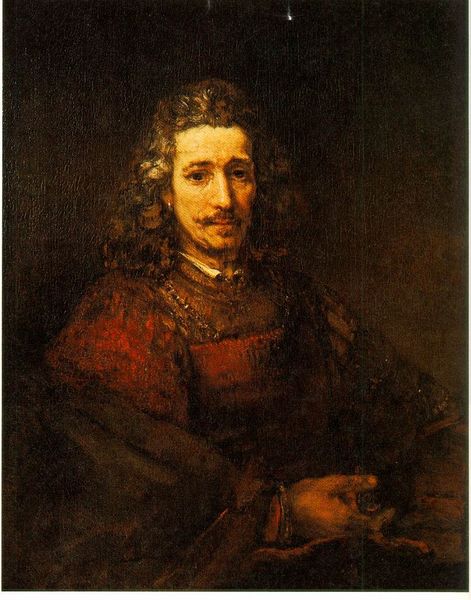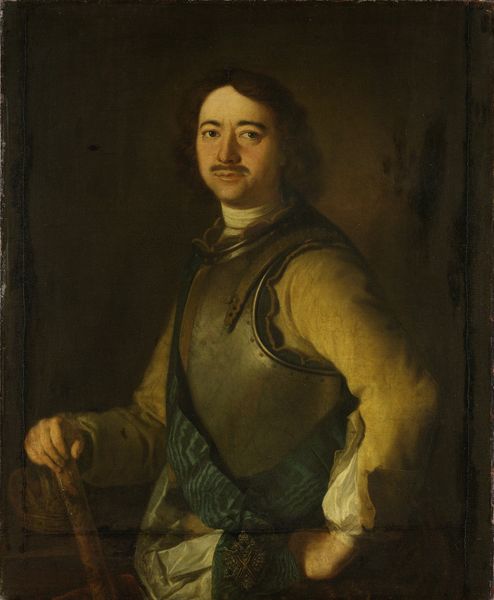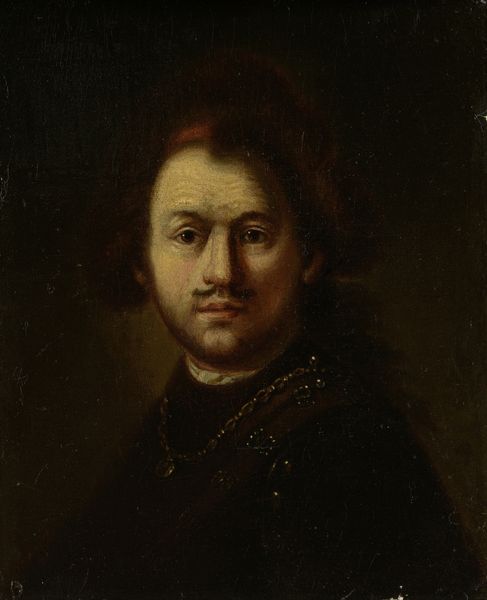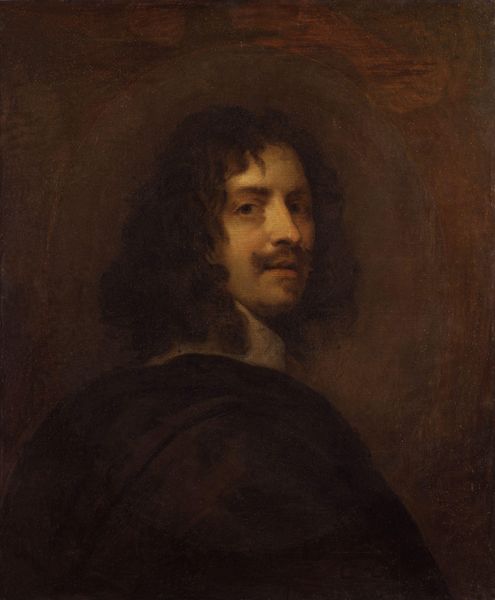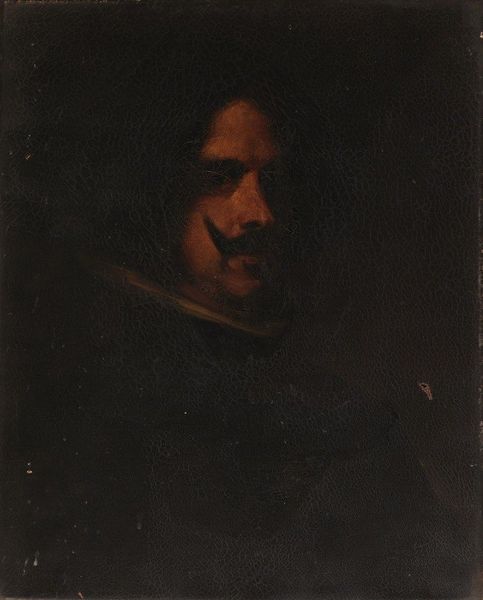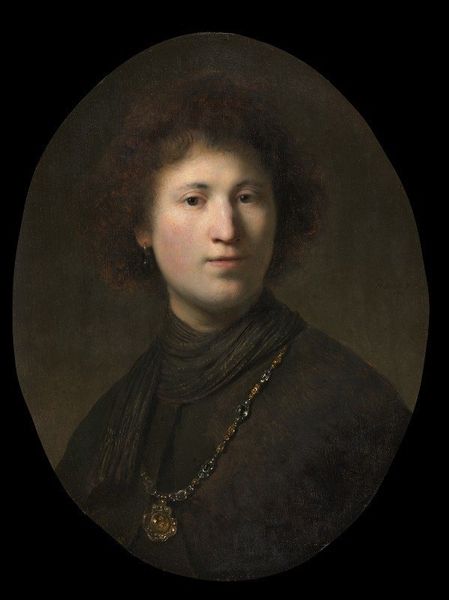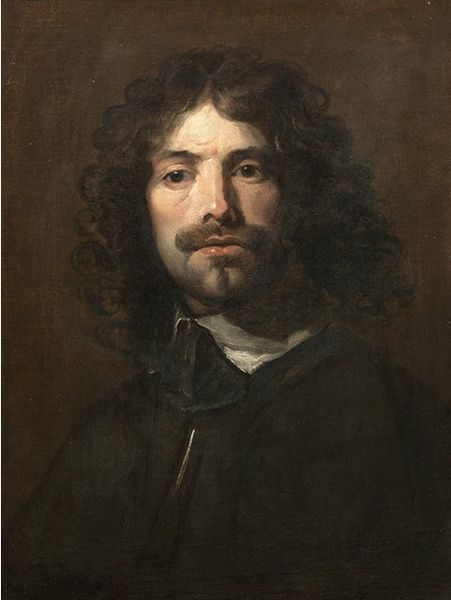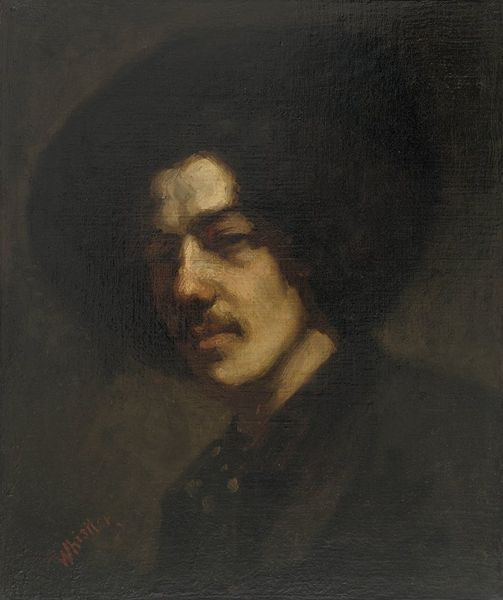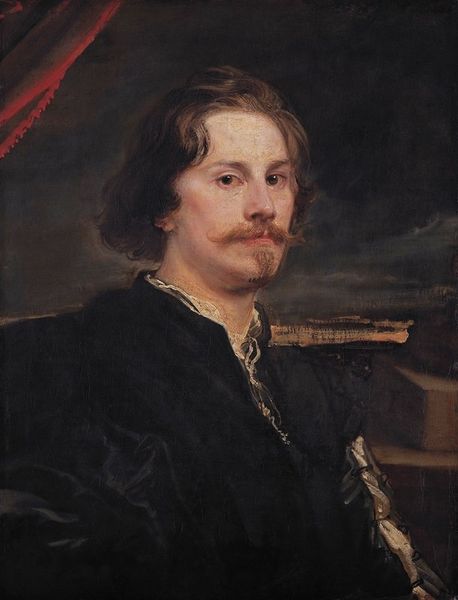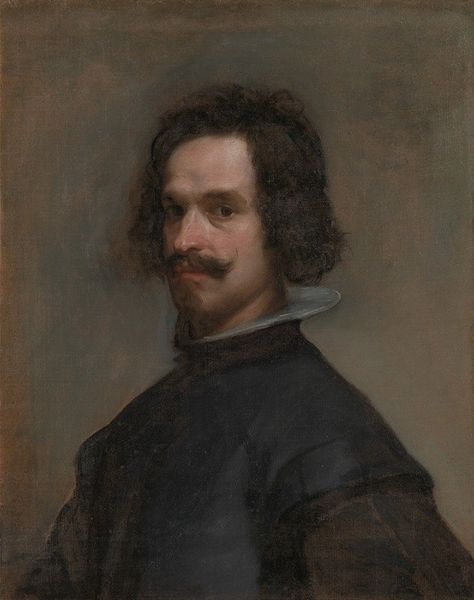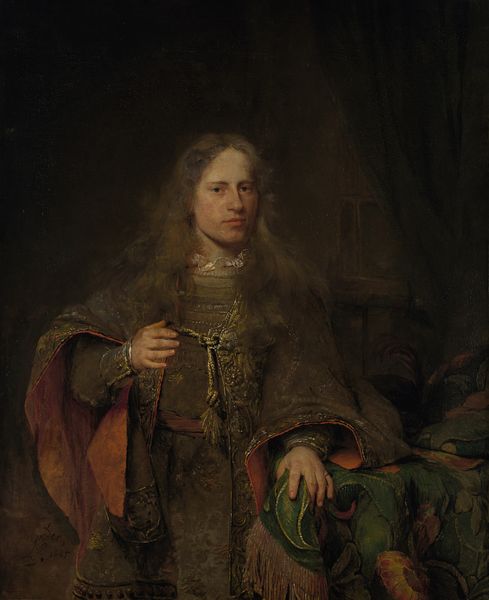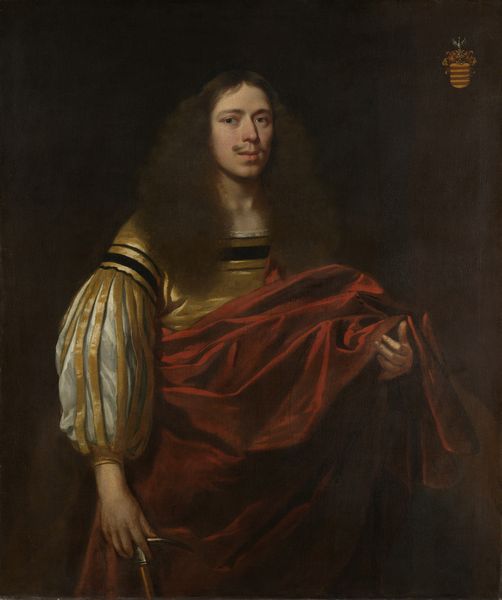
oil-paint
#
portrait
#
figurative
#
character portrait
#
baroque
#
portrait image
#
dutch-golden-age
#
oil-paint
#
charcoal drawing
#
male portrait
#
portrait reference
#
portrait head and shoulder
#
animal drawing portrait
#
portrait drawing
#
facial study
#
facial portrait
#
realism
Copyright: Public Domain: Artvee
Curator: Looking at Rembrandt van Rijn’s “Man with a Magnifying Glass,” dating from the early 1660s, my initial impression is one of profound intimacy. The sitter seems caught in a moment of deep contemplation, bathed in this characteristic, warm Rembrandt light. Editor: It’s compelling how the texture contributes to this feeling. You see how he builds the paint up so thickly in places, particularly around the face and hands, almost like he's sculpting with the oil paint? That tangible materiality makes the work so present. Curator: Absolutely. The subject's garments also reveal significant things. It is important to ask about the sitter’s identity—whether the clothes signify wealth, social role, or even the materials employed by Rembrandt. It hints at questions around class, patronage, and how artists navigated 17th-century Dutch society. Editor: And the magnifying glass? Is it about enhanced vision, knowledge acquisition, the growing scientific curiosity of the era? Or perhaps, on a meta level, Rembrandt encouraging the viewer to really *look*—to engage in a slower, more meticulous act of seeing? Curator: I see what you mean about the act of looking. What does it mean to carefully investigate ourselves and each other in this way? Moreover, Rembrandt challenges conventions by democratizing portraiture. What makes him an especially astute chronicler of the human condition is the absence of any embellishment. Editor: Speaking of that very condition: notice the brushwork around the eyes? It almost suggests a weariness. Maybe the work gestures towards universal themes of age and wisdom—or the weight of observation. I am so interested in thinking about who produced this painting and with what resources. Curator: I completely agree. By emphasizing material conditions and questioning portraiture, it becomes an incredibly multilayered conversation. It transcends individual identity and engages with much broader societal and even philosophical notions. Editor: So it goes to show that with some careful observation, this piece has a lot to show about the complex connections between material existence, social identity, and seeing, right? Curator: Precisely. This engagement urges us to view Rembrandt as far more than an isolated figure. We might recognize him as both product and active agent in the shaping of social dynamics during his lifetime.
Comments
No comments
Be the first to comment and join the conversation on the ultimate creative platform.
